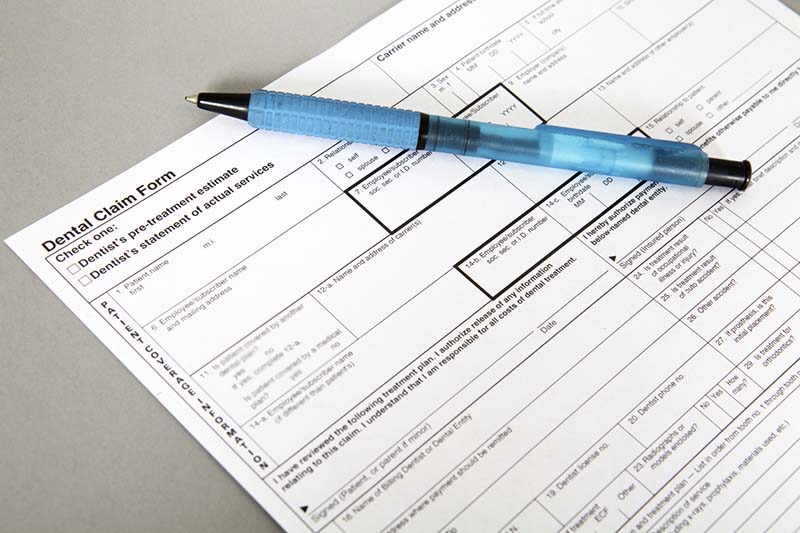Benefits of Having PPO Dental Insurance
Dental insurance is a big help when it comes to maintaining a healthy smile. Dental plans can seem complicated, but it’s so important to understand what is covered by each plan in order to get the best coverage for your personal needs. Since preventative care is one of the things that dental insurance does cover, it’s ideal for those wanting a healthy mouth in the long run. One type of dental insurance is a preferred provider organization plan, or PPO, and is popular with dental patients for several reasons.
How Does PPO Dental Insurance Work?
In a PPO plan, patients can choose different dentists from a wide network of professionals that have agreed to accept a contracted rate for services. This means they do not charge the regular full fee, but rather a discounted fee that is paid in full. When patients visit a PPO dentist, they are responsible for a portion of this discounted rate, while the insurance company pays the balance. The percentage the patients pays is usually low, depending on the procedure, and is just a portion of a discounted fee rather than being charged the full amount for the service. For this reason, PPO dental insurance plans are often the lowest out-of-pocket options.
Before choosing a PPO plan, you’ll want to make sure you are familiar with the dentists that are in the network. This way, you’re able to choose a dentist that you are either comfortable with or one you know will be convenient for you and your family. Know what services are covered and what percentage you will be responsible for when it comes to certain procedures. This makes it easier to plan for your overall dental care and make the most of your PPO plan.
What Is Covered by PPO Dental Insurance?
Each dental plan categorizes basic and major procedures slightly differently, so if you need dental work done, you will have to check with your specific plan. Although there are minimal differences in PPO dental plans in terms of what they cover and their costs, most PPO plans offer similar coverage for the following procedures.
- Preventative Care Services (full coverage):
- Annual or semi-annual visits for cleanings
- X-rays
- Sealants
- Fluoride treatments
- Basic Procedures with Discounted Co-Insurance Fee:
- Treatment for Gum Disease
- Fillings
- Root canals
- Extractions
- Major Procedures with Discounted Co-Insurance Fee:
- Crowns
- Bridges
- Inlays
- Dentures
- Root Canals (on some plans)
Most dental insurance, including PPO plans, will not cover any cosmetic procedures. This generally includes teeth whitening, shaping, veneers or any gum contouring. These treatments are only meant to improve the look of teeth and are not medically necessary. Anything that is not essential to the oral health of a patient must be covered by the patient in full.
You may be able to find a plan that covers braces, but there could be a special rider for that. If you or a family member may need braces in the future, check with your plan’s specific requirements for coverage. There may also be a waiting period for orthodontic services with any insurance plan.
PPO Insurance Gives Patients More Flexibility
The PPO plan networks, both general dentists, and specialists offer a wide variety of professionals from which to choose. Unlike other dental plans, PPO insurance allows patients to choose whatever dentist they prefer from the extensive provider network. If you want to see a specialist, there is no lengthy process that involves visiting your primary care dentist for a referral. You have the freedom to choose your own network specialist and see them right away without any penalties. You are also able to switch dentists within the network at any time, for any reason, and not have to worry about calling the insurance company to notify them of the change.
Although there are some limits to PPO plans if you happen to go outside of the network, it doesn’t mean you are limited to only the dentists within the network. If you have a dentist you absolutely love that is not in network, your out-of-pocket expenses may be higher for certain treatments because they are not contracted with the insurance company at a lower rate. However, you are still able to see any professional you choose and submit claims to your insurance provider after the procedure.
Overall Benefits of Using PPO for Dental Care
- You will be able to get care from any dentist, regardless if they are in the network, and you just have to be aware of any extra associated costs.
- You won’t have to continue to go to the same dentist if you don’t like his or her work and don’t need to choose a primary care dentist.
- If you need to see a specialist, you don’t need a referral and can choose whomever you want within the network.
- Besides having flexibility and more control of your dental care, you may save more on a PPO plan depending on the care you need. Because dentists have agreed to a lower fee, you will always get the discounted rate and know what the costs are upfront.
If you are going to need a lot of dental work, a PPO plan may make sense for you. This is because once you reach the annual maximum of the plan, you can still get the dental work done at the plan’s low rates that have been negotiated. A PPO gives patients lower rates and expanded choice that many other dental insurance plans don’t offer, and continues to be one of the most popular insurance options on the market.


